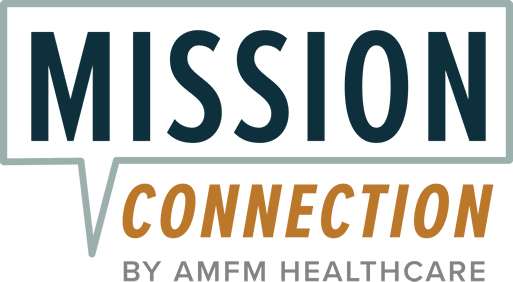Early Maladaptive Schemas and Attachment: How Early Bonds Affect Adult Relationships

The way our childhood shapes how we think, act, and react in adulthood has long been one of the core threads in psychological research.
Schema therapy and attachment theory are two fascinating influences in the field that bring powerful insights into why we are the way we are in adulthood. This is especially the case when it comes to the spontaneous, subconscious side of our emotions and behaviors – the part we often cannot control or rationalize.1-3
If your actions and emotions, especially in relationships, remain a mystery to you, schema therapy and attachment theory may help shed light on how to heal and move forward in healthy ways. A mental health professional is readily available to help you in this process.
This page can also help you understand the schema theory and attachment connection, as well as how schemas can shape attachment patterns, by exploring:
- The schema theory and attachment connection
- How schema theory relates to adult relationships
- How attachment theory relates to adult relationships
- The ways attachment schemas can impact emotional regulation
- Breaking negative schemas from attachment trauma
- An explanation of schema therapy for attachment
- Where to find professional suppor

The Schema Theory and Attachment Connection
There are multiple ways in which schema therapy connects to attachment theory, which can open doors to understanding different avenues to treatment. In fact, schema therapy pulls from attachment theory heavily when considering how to target core beliefs and behavioral patterns in relationships.
However, before discussing these connections in detail, we first provide a brief overview of both perspectives and how each one relates to adult relationships below.
Schema Theory and Adult Relationships
Schema therapy was established by Jeffrey Young between the 1980s and 1990s – about 30 years later than attachment theory.1,3 Combining different influences, including Gestalt therapy, psychoanalysis, cognitive therapy, object relations and others, Young developed schema therapy. In fact, the approach is considered an expansion of the traditional cognitive behavioral therapy (CBT) model.3,4
Nowadays, schema therapy is widely known for treating chronic personality and characterological mental health problems, and it’s commonly successful among patients who don’t respond to CBT.4
Young’s approach focuses on schemas, which are beliefs about the self, others, and relationships in general that children learn in early childhood. To put it simplistically, schemas arise from communication patterns with attachment figures, and they can be positive or negative.
However, Young focused on “maladaptive” schemas. The term” maladaptive” refers not only to these schemas’ negative nature but also to the fact that they can cause dysfunctional coping styles and patterns. This is also the route upon which maladaptive schemas manage to influence our relationships negatively in adulthood.
An example of a maladaptive schema’s negative impact would be the following:
A child grows up in an environment where they feel mistreated by their caregivers. Therefore, their core emotional need of secure attachment is not met. As a result, the child internalizes the belief that others, especially those they are close to, are always going to mistreat or hurt them.
To manage the pain of this belief, the child detaches emotionally, self-isolates, and avoids intimacy later in life. Relationships are thus difficult and uncomfortable, as the person, now an adult, fears proximity and hesitates to truly connect with their partners.
Now that you have a general overview of how schemas can affect adult relationships, let’s turn our attention to the impacts of attachment.
Attachment Theory and Adult Relationships
Attachment theory, like schema therapy, centers around our early bonds with caregivers and how these bonds shape our social attitudes and behaviors throughout our lives.1,2 At the core of this theory lies the concept of internal working models – our social blueprints, which are built upon beliefs about ourselves and others.1,5
Internal working models are quite similar to schemas. Yet, in attachment theory, an internal working model can be secure – which is the case for 50-60% of people. In the case of a secure working model, a child’s core emotional needs were typically met by their caregivers. As a result, the child cultivated positive beliefs about the self and others. For example, I am lovable and worthy, and Others are reliable and provide care and support when I need them.6
An insecure internal working model, on the other hand, could be seen as the equivalent of early maladaptive schemas. In attachment theory, we differentiate between anxious, avoidant, and disorganized as the three insecure attachment styles – which are built upon the corresponding internal working models.2,7
How Attachment Styles and Schema Modes Influence Behaviors in Relationships
While the internal working model is a blueprint, or “mindset,” an attachment style is the manifestation of this mindset in the context of social interactions, especially romantic relationships. In other words, attachment includes a sum of beliefs, memories, emotions, and behaviors that all align into one “style” from which we operate in attachment settings.6 The equivalent of styles in schema theory is schema “modes.”
In the schema therapy example above, the childhood wound is the perceived mistreatment by caregivers. Their need for secure attachment was not met, and therefore, maladaptive schemas and an insecure internal working model were created. For instance, a likely consequence is the development of the mistrust/abuse schema and the dismissive/avoidant internal working model (and attachment style) in particular.
Someone who grew up in such an environment would typically end up with negative beliefs about relationships, such as Others won’t treat me well and are not to be trusted. They could also form dismissive behaviors, shut down emotionally, act overly self-reliant, and fear emotional intimacy. This example demonstrates the schema theory and attachment connection.
We understand that the link between attachment theory and schema therapy can be confusing, so the following section aims to put it forward as clearly as possible.
Summary: Link Between Attachment and Early Maladaptive Schemas
The overviews above demonstrate the connection between attachment and early maladaptive schemas. As the link between the two goes even deeper, below, we have summarized how the two perspectives relate to each other:1,3
- A secure base is a core need in infancy
- Infants’ needs stretch beyond mere survival and include aspects of autonomy, play, and exploration
- The first bond with caregivers builds a relationship “blueprint”
- Children start creating internal belief maps about themselves and others early on, based on this blueprint
- Unmet childhood needs often lead to maladaptive beliefs that can be carried into adulthood
It’s important to consider both attachment theory’s and schema therapy’s viewpoints when examining someone’s relationship concerns and goals. While there are common facets, attachment and schema therapy each bring a unique and valuable perspective of how we, as humans, bond and attach. These perspectives not only apply to childhood, but also to our love lives later in life.
Attachment Schemas and Emotional Regulation
Emotion regulation is a skill that is typically cultivated early in life within a child’s relationship with caregivers. When a child is upset, they reach out to the attachment figure for security. An attuned caregiver would soothe the baby and provide comfort.
With time, the child internalizes this feeling of being soothed by their parent and learns that distress can be managed, challenges can be dealt with, and discomfort can eventually fade.8
When an infant’s attempt to use an attachment figure as a secure base fails, the process of regulating negative moods is disrupted. Instead, the child needs to sit with the discomfort and figure out a way to cope with it alone. Not being modeled healthy ways to self-soothe often results in dysfunctional behavioral patterns, such as social and emotional withdrawal. However, it also goes hand in hand with heavy, painful beliefs that rationalize why the caregivers are not there when needed, such as People are not reliable.9
Attachment schemas develop when the core need for secure attachment is not met. Given that healthy emotion regulation skills form within secure attachment relationships with caregivers, it’s understandable that people with maladaptive attachment schemas are likely to struggle with emotion regulation issues.10
Attachment schemas are typically categorized in the domain “Disconnection & Rejection” – the first of the five schema domains Young conceptualized. There are five schemas in this domain, including the following.3
Attachment Schemas: Disconnection/Rejection Domain:
- Abandonment: Chronic anxiety about losing loved ones
- Mistrust/Abuse: Hypervigilance to abuse and the belief that others will cause pain, intentionally or unintentionally
- Emotional Deprivation: Chronic disregard or oblivion of one’s emotions and emotional needs
- Defectiveness/Shame: The belief that something is seriously wrong with the self and persistent shame around the perceived flaw
- Social isolation: Intense experience of alienation, being different, and “on the outside”
Breaking Negative Schemas From Attachment Trauma
Schema therapy has several pillars that include the child’s core emotional needs, maladaptive schemas, maladaptive coping styles, and, finally, schema modes – the most complex part of Young’s concept.3,4
Schema modes are the roles or personas we embody and operate from when our schema mechanisms get triggered and activated. For example, in adulthood, small cues can push us into modes like the “Vulnerable Child,” which involves feelings like overwhelm and shame. Alternatively, the “Detached Protector” mode can result in numbing and shutdown, which can manifest as anxious clinginess or dismissive withdrawal in relationships.12
Breaking negative schemas from attachment trauma typically involves merging corrective experiences with practical skills. For instance, typical schema therapy practices include:3,12
- Limited reparenting: The therapist becomes a safe base and acts in a way that meets the client’s emotional needs
- Empathetic confrontation: The therapist confronts the dysfunctional coping styles, such as unhealthy habits, while providing validation and empathy
- Imagery rescripting: Revisiting key memories and creating new meanings and viewpoints of the traumatic past experiences
- Mode dialogues/chairwork: Different modes “speak” to each other; therefore, the aim is internal integration and strengthening the “Healthy Adult” mode
- Behavioral pattern-breaking: Involving cognitive-behavioral tasks applied later in the therapy
What Is Schema Therapy for Attachment?
Schema therapy for attachment is an integrative approach that blends CBT, attachment theory, and emotion-focused methods. In practice, the therapist uses attachment-informed schema interventions – limited reparenting, imagery rescripting, mode work, and so on – to meet patients’ core needs (including safety, attunement, autonomy, and realistic limits).12
Schema therapy is available in different formats, based on individual needs. These formats include:
- Outpatient therapy, such as weekly individual and/or group therapy for attachment schemas
- Intensive therapy, involving more hours than outpatient programs, for faster skill development
- Inpatient schema therapy for attachment issues, which can be used for circumstances where safety and normal functioning are disrupted
Mission Connection: Healing Attachment Through Schema Therapy
At Mission Connection, we understand the emotional load of early maladaptive schemas and the issues that such beliefs can create in daily life and romantic relationships.
If you suspect that you might be dealing with early childhood attachment trauma and maladaptive schemas, seeking information and support can significantly ease tension and everyday struggles. Even though maladaptive schemas can be persistent, with the right professional help and effort, they can be healed.
Mental health treatment using schema therapy is available and effective when it comes to both insecure attachment and early maladaptive schemas.
Our team at Mission Connection specializes in compassionate, evidence-based outpatient care that can integrate schema therapy for attachment into a personalized plan. If you are looking for professional help for yourself or someone you love, do not hesitate to get in touch. We are here to support you on your journey towards healing childhood wounds and cultivating secure and healthy relationships.

References
- Bowlby, J. (1969). Attachment and loss: Vol. 1. Attachment. New York: Basic Books.
- Ainsworth, M. D. S., Blehar, M. C., Waters, E., & Wall, S. (1978). Patterns of attachment: A psychological study of the strange situation. Hillsdale, NJ: Lawrence Erlbaum Associates.
- Young, J. E., Klosko, J. S., & Weishaar, M. E. (2003). Schema therapy: A practitioner’s guide. Guilford Press.
- Martin, R., & Young, J. (2010). Schema therapy. Handbook of cognitive-behavioral therapies, 317-346.
- Bowlby, J. (1973). Attachment and loss: Vol. 2. Separation: Anxiety and anger. New York: Basic Books.
- Pietromonaco, P. R., & Barrett, L. F. (2000). The internal working models concept: What do we really know about the self in relation to others? Review of General Psychology, 4(2), 155–175.
- Main, M., & Solomon, J. (1990). Procedures for identifying infants as disorganized/disoriented during the Ainsworth Strange Situation. In M. T. Greenberg, D. Cicchetti, & E. M. Cummings (Eds.), Attachment in the preschool years: Theory, research, and intervention (pp. 121–160). University of Chicago Press.
- Mikulincer, M., Shaver, P. R., & Pereg, D. (2003). Attachment theory and affect regulation: The dynamics, development, and cognitive consequences of attachment-related strategies. Motivation and Emotion, 27, 77-102. doi:10.1023/A:1024515519160
- Shaver, P. R., & Mikulincer, M. (2007). Adult attachment strategies and the regulation of emotion. Handbook of emotion regulation, 446, 465.
- Mikulincer, A., & Shaver, P. R. (2019). Attachment orientations and emotion regulation. Current Opinion in Psychology, 25, 6-10. doi:10.1016/j.copsyc.2018.02.006.
- Karantzas, G. C., Younan, R., & Pilkington, P. D. (2023). The associations between early maladaptive schemas and adult attachment styles: A meta-analysis. Clinical Psychology: Science and Practice, 30(1), 1.
- Dadomo, H., Grecucci, A., Giardini, I., Ugolini, E., Carmelita, A., & Panzeri, M. (2016). Schema therapy for emotional dysregulation: Theoretical implication and clinical applications. Frontiers in psychology, 7, 1987.






